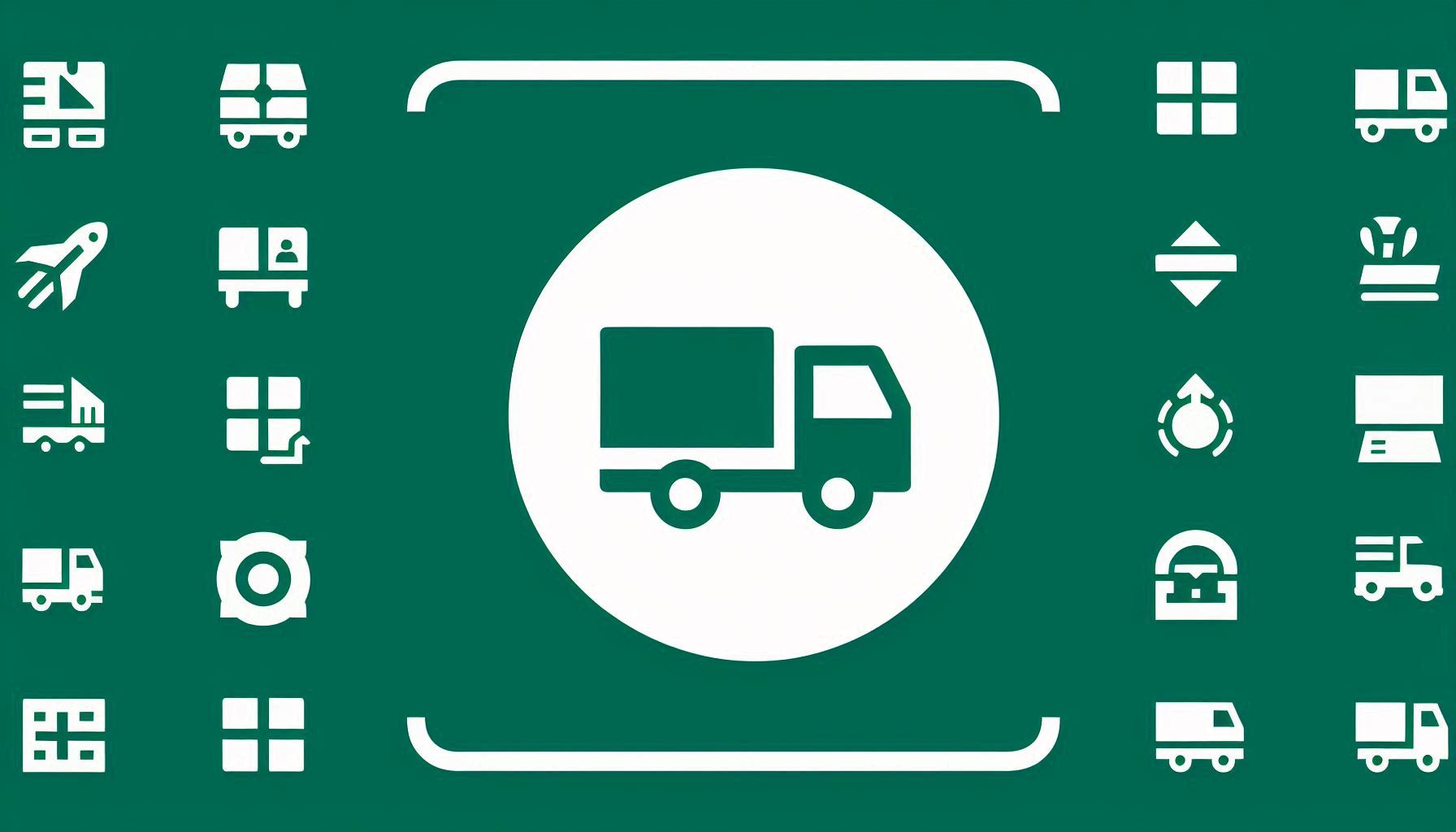Research on the Location of Front-Loading Warehouses Based on the Reverse Logistics of Fresh Agricultural Products

Downloads
The proposal to create front-loading warehouses has been suggested as a tactic to enhance the effectiveness and quality of distributing fresh agricultural products in the concluding stage of delivery. Nevertheless, there has been a noted escalation in the rate of loss of these products, which can be ascribed to multiple factors, including inaccuracies in demand forecasting. This incongruity arises from consumers’ inability to consume the initially forecasted quantities and unforeseen surges in demand from specific businesses. Consequently, surplus products are left unsold and eventually wasted. This study explores the viability of implementing a reverse logistics model for fresh agricultural products in tandem with the front-loading warehouse. The study presents both traditional and reverse dual models aimed at cost minimisation and introduces novel criteria for the selection of warehouse locations to enhance the efficiency of reverse logistics operations. An advanced hybrid heuristic optimisation algorithm is employed to identify optimal solutions, primarily focusing on minimising product loss rates, reducing logistics expenses and establishing a more equitable supply-demand equilibrium in the area. In the case of Nanjing, it is found that compared with the traditional model, because the network model assumes more functions, the front-loading warehouse in the reverse model has more site selection points in high-demand areas to meet the needs of consumers and is consistent with the distribution of population density and economic activities in Nanjing. At the same time, among the factors affecting the total cost, it is necessary to focus on transportation and fixed costs, while the impact of time and freight damage costs is less.
Downloads
Almeida P, Crispiniano Garcia R, Pallavicini Fonseca A. advances in modelling of the integrated production logistics in sugarcane harvest. Promet-Traffic&Transportation. 2022;34(4):595–608. DOI: 10.7307/ptt.v34i4.4012.
Ge H, et al. Research on emergency logistics model of agricultural products based on coupling of petri net and blockchain. Promet-Traffic&Transportation. 2021;33(6):883–891. DOI: 10.7307/ptt.v33i6.3845.
Jiang Y, Bian B, Zheng B, Chu J. A time space network optimization model for integrated fresh fruit harvest and distribution considering maturity. Computers & Industrial Engineering. 2024;110029. DOI: 10.1016/j.cie.2024.110029.
Ulloa R, Villalobos, JR. Impact of special-denomination label constraints on fresh produce supply chains. Computers & Industrial Engineering. 2022;173:108742. DOI: 10.1016/j.cie.2022.108742.
Chen J, Liao W, Yu C. Route optimization for cold chain logistics of front warehouses based on traffic congestion and carbon emission. Computers & Industrial Engineering. 2021;161:107663. DOI: 10.1016/j.cie.2021.107663.
Guan X, Li G. Optimization of cold chain logistics vehicle transportation and distribution model based on improved ant colony algorithm. Procedia Computer Science. 2023;228:974–982. DOI: 10.1016/j.procs.2023.11.128.
Gong C, et al. Logistics sourcing of e-commerce firms considering promised delivery time and environmental sustainability. European Journal of Operational Research. 2024;317(1):60–75. DOI: 10.1016/j.ejor.2024.02.026.
Rahmanifar G, et al. Integrated location and routing for cold chain logistics networks with heterogeneous customer demand. Journal of Industrial Information Integration. 2024;38:100573. DOI: 10.1016/j.jii.2024.100573.
Li D, Li K. A multi-objective model for cold chain logistics considering customer satisfaction. Alexandria Engineering Journal. 2023;67:513–523. DOI: 10.1016/j.aej.2022.12.067.
Garai A, Sarkar B. Economically independent reverse logistics of customer-centric closed-loop supply chain for herbal medicines and biofuel. Journal of Cleaner Production. 2022;334:129977. DOI: 10.1016/j.jclepro.2021.129977.
Chen Q, Liu Z, Tian L, Qin X. In-store, pre-warehouse, or store-and-warehouse integration: Strategic analysis for neighborhood fresh product retail modes. Computers & Industrial Engineering. 2023;177:109085. DOI: 10.1016/j.cie.2023.109085.
Jiang H, Wu T, Ren X, Gou L. Optimisation of multi-type logistics uav scheduling under high demand. Promet-Traffic&Transportation. 2024;36(1):115–131. DOI: 10.7307/ptt.v36i1.261.
Govindan K, Gholizadeh H. Robust network design for sustainable-resilient reverse logistics network using big data: A case study of end-of-life vehicles. Transportation Research Part E: Logistics and Transportation Review. 2021;149:102279. DOI: 10.1016/j.tre.2021.102279.
Labelle A, Frayret JM. First-mile reverse logistics: An agent-based modelling and simulation application for glass bottle recovery. Journal of Cleaner Production. 2023;422:138574. DOI: 10.1016/j.jclepro.2023.138574.
Ermes T, Niemann W. Managing omni-channel reverse logistics risk during supply chain disruption recovery in the South African fashion industry. Journal of Transport and Supply Chain Management. 2023;17:932. DOI: 10.4102/jtscm.v17i0.932.
Ahmadi S, Shokouhyar S, Amerioun M, Tabrizi NS. A social media analytics-based approach to customer-centric reverse logistics management of electronic devices: A case study on notebooks. Journal of Retailing and Consumer Services. 2024;76:103540. DOI: 10.1016/j.jretconser.2023.103540.
Bajgani SE, Saberi S, Toyasaki F. Designing a reverse supply chain network with quality control for returned products: Strategies to mitigate free-riding effect and ensure compliance with technology licensing requirements. Technological Forecasting and Social Change. 2023;195:122744. DOI: 10.1016/j.techfore.2023.122744.
Guo Y, Shahraki AA. Selection of rail station locations on an intercity route regarding maximum users’ economic profits. Promet-Traffic&Transportation. 2023;35(4):595–606. DOI: 10.7307/ptt.v35i4.241.
Qichen O, Mi G, Meitong A, Yichen W. Road-rail intermodal hubs site selection based on road freight demand mining – A case from Beijing-Tianjin-Hebei region. Promet-Traffic&Transportation. 2024;36(3):492–507. DOI: 10.7307/ptt.v36i3.462.
Zhongyi J, et al. A risk-averse distributionally robust optimisation approach for drone-supported relief facility location problem. Transportation Research Part E: Logistics and Transportation Review. 2024;186:103538. DOI: 10.1016/j.tre.2024.103538.
Song J, Li B, Szeto WY, Zhan X. A station location design problem in a bike-sharing system with both conventional and electric shared bikes considering bike users’ roaming delay costs. Transportation research part E: logistics and transportation review. 2024;181:103350. DOI: 10.1016/j.tre.2023.103350.
Kitthamkesorn S, Chen A, Ryu S, Opasanon S. Maximum capture problem based on paired combinatorial weibit model to determine park-and-ride facility locations. Transportation Research Part B: Methodological. 2024;179:102855. DOI: 10.1016/j.trb.2023.102855.
Abdulvahitoğlu A, Vural D, Abdulvahitoğlu A. Optimising traffic safety–locating traffic gendarmes based on multi-criteria decision making. Promet-Traffic & Transportation. 2023;35(6):800–813. DOI: 10.7307/ptt.v35i6.318.
Liu C, Hou P. Dynamic modelling of cold chain logistics services under budget constraints for the delivery of fresh products in an urban area. Applied Mathematical Modelling. 2024;125:809-835. DOI: 10.1016/j.apm.2023.09.019.
Copyright (c) 2024 Jiarui XI, Nana GENG

This work is licensed under a Creative Commons Attribution-NonCommercial 4.0 International License.




















